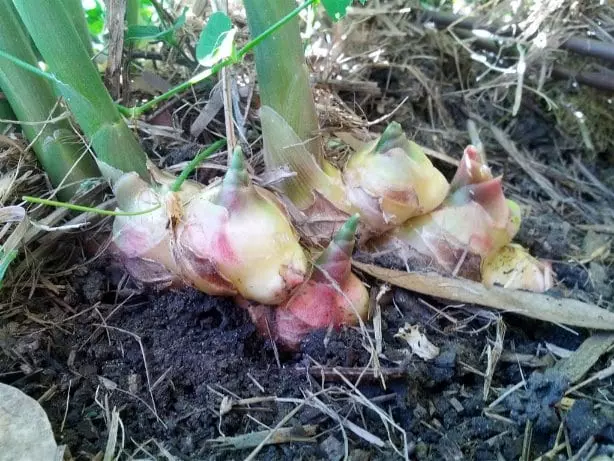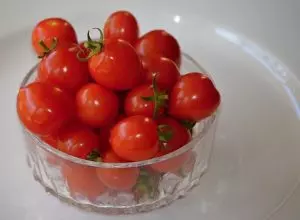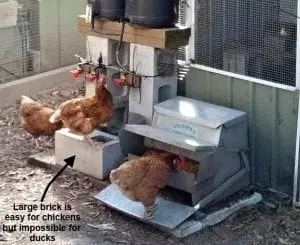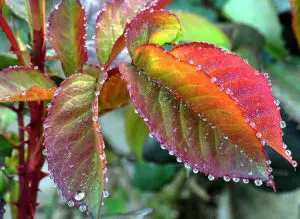Introduction
Freshly harvested ginger from the garden is amazing! Even just removing the rhizome from the soil fills the nostrils with such beautiful fragrance it's almost impossible not to hold the ginger root close to the face for several seconds to appreciate this gift from nature. So often, it's the scent of food which subconsciously persuades us to eat it either because we need to or because we want to.

Ginger rhizome in ground sprouting from eyes
There aren't many foods with a bigger array of uses than ginger. Ginger can be both an indulgent snack and a medication all-in-one with a pregnant mother able to satisfy a sweet craving whilst helping to quell the unease of morning sickness.
Ginger can be used as a spice flavouring in cooking or the base ingredient for a drink, like gi nger ale or ginger tea.
nger ale or ginger tea.
Some credible medical studies have shown ginger to have important cancer fighting properties and the anecdotal healing properties of ginger has lead to centuries of world wide use by many cultures to help or cure dozens of aliments.
Ginger has a grand genus with the common edible plant (mainly Asian or West Indian grown) being the most well known; however, ornamental ginger is also cherished as a unique plant with many varieties of beautiful flowering specimens collected by plant enthusiasts world-wide.
Most ginger grown for eating can flower but the flowers tend to be uneventful small white protrusions jutting out from a scale-like bud on the end of a short stem.
Why grow ginger?
There are many good reasons to grow ginger and some are:
-
It's easy to grow
-
It grows fast
-
Can be used raw or cooked
-
Very versatile – can be sweet or savoury
-
Consuming ginger has known health benefits
-
Cost saving by growing ginger at home is huge
-
Keeps for a long time in the crisper
-
Looks nice in the garden
How to grow ginger?

Where
In full-sun or part-shade, ginger will thrive in most gardens around the world. I grow ginger in an area of my garden, which has dappled shade at times throughout the day and I selected this location for my ginger because of the difficulty I have growing other food crops in the same area (as most vegetable and fruit crops do best in full-sun) but ginger grows well in either so rather than struggle with other plants in that particular spot, I grow ginger there instead.
Soil
The soil should be well fed with organic material like manures and compost. Also, ginger grows best in free draining soils with good moisture holding qualities; however, it will tolerate dry spells and some neglect.
When
Ginger is a fast growing plant; therefore, growing it in a cooler climate isn't too prohibitive as a crop can be grown within the spring/summer time duration easily enough. But it does need the warmth to grow successfully so autumn or winter plantings will achieve nothing until spring hits.
Pests
Ginger can be struck by a number of pests and diseases like: soft rot (in the root); nematodes; various fungus problems, beetles, cutworms, etc. However, generally the ginger plant is pretty hardy (certainly hardier than most other edible crops) and I personally have not seen any disease or pest problems associated with ginger to give me any concern or warrant intervention. Ginger is certainly one of the best low maintenance edible plants I grow and as long as the soil is fertile and free-draining it will flourish.
How
The ginger plant is started from a rhizome (the root) of the plant, which is also the part that's eaten. An “eye” forms (similar to growing a potato) on the rhizome and it's from the eye that the stem grows with a grass-like appearance standing about 2-3 feet tall fully grown. Rhizomes commonly grow around 20 cm long and about half that wide (but can get bigger depending on conditions and type) and are able to be divided into many pieces (each with at least one eye) for replanting next season.
Ginger for growing can be purchased from a garden centre already potted-up and sprouting or you can try simply growing it from a rhizome bought from the supermarket (as long as it hasn't been treated). Ginger rhizomes found locally at farmers markets are probably the best option. One rhizome is really all that is needed to start with as this will produce several plants and over a few seasons, that one rhizome of ginger will become plenty.
from a rhizome bought from the supermarket (as long as it hasn't been treated). Ginger rhizomes found locally at farmers markets are probably the best option. One rhizome is really all that is needed to start with as this will produce several plants and over a few seasons, that one rhizome of ginger will become plenty.
Upon final harvesting in winter when the plant dies back, I dig a hole in situ and bury any rhizomes I wish to keep as propagation for next seasons crop. Then in spring, I dig the rhizomes up again, separate and plant them into the garden bed.
Before planting out I add some old composted manure (a mix of horse and chicken) to the soil, some compost, and lightly till these additives into the surface. I space the divided rhizome segments about 30 cm apart and bury them just below the surface, then add a light covering of lucern or sugar cane mulch on top before watering in.
Throughout the growing season, I don't add any extra fertiliser although I do give the ginger an occasional sprinkle of seaweed solution.
Ginger can be harvested at any time, but the younger the plant, the lesser the spice strength and as the ginger rhizome matures the stronger the “bite” becomes. I quite like young ginger becaus e the spice is mildly refreshing and it's easier to slice and grate. Nevertheless, for an authentic ginger taste in Asian cooking or ginger based sweets, the concentrated spice of matured ginger can't be beaten but just remember the older the ginger the more fibrous it becomes so for cooking, such as candying, longer cooking time may be required than if younger ginger was used.
e the spice is mildly refreshing and it's easier to slice and grate. Nevertheless, for an authentic ginger taste in Asian cooking or ginger based sweets, the concentrated spice of matured ginger can't be beaten but just remember the older the ginger the more fibrous it becomes so for cooking, such as candying, longer cooking time may be required than if younger ginger was used.
And, obtaining young or old ginger (depending on your preference) is another reason why growing your own ginger is a good idea. The supermarket ginger is often oldish so searching for young ginger can be a hassle unless you have it in the backyard and then ginger can be harvested when you choose. Also, supermarket ginger may be scalded or possibly even treated to prevent the ginger from sprouting so the best way to ensure fresh ginger is to grow it ourselves.
Nevertheless, if you can't grow your own ginger try to get it as fresh as you can (like farmers markets) and making your own candied or pickled ginger from the root will be much better and cheaper than buying it already processed.
A small 250 gram container of candied ginger costs around $5 and sometimes reading the ingredients on the packaging makes me wonder just how much artificial ingredients and processing has gone into making it. Home-made candied ginger is terribly easy to make and also a good way to preserve it for use in other dishes. Actually, ginger itself is rather good at helping to preserve food in its own right.
Making candied ginger

Candied ginger (mild)
Candying ginger is not just a way to make an easy, great tasting, healthy, sweet snack – that's just one of several reasons. Candied ginger is another way of preserving ginger (yes, as a snack for later) but also as an ingredient in cooking whether it be savoury or sweet. Kept in the pantry, candied ginger should last a few months and in the fridge (or frozen) it's likely to last 12 months.
Preservation time is important to the self sufficient home gardener because ginger can't be grown all year in most places; therefore, it must be grown seasonally and having the qualities for long storage and preservation to last until next seasons crop saves money, is convenient, and a clever use of resources.
There are many different recipes to be found for making candied ginger, the following methods I use work best for me and were developed through some trial and error. I personally found some recipes I trialled left too much spice in the candied ginger pieces for my preference when the purpose was to make a sweet snack. However, I still wanted the stronger spiced ginger to add to cooking as an ingredient hence the two methods below.
Ingredients
Here are the ingredients for making candied ginger:
-
Ginger – 500 grams (one pound) freshly peeled ginger to be sliced thinly (about as thick
 as a standard wedding-ring band or even thinner (2 mils). Be sure NOT to wear gloves when you prepare the ginger as the peeling process will leach such aromatic fragrance into your hands that for a full day after the task you'll be able to smell the wonderful scent of ginger.
as a standard wedding-ring band or even thinner (2 mils). Be sure NOT to wear gloves when you prepare the ginger as the peeling process will leach such aromatic fragrance into your hands that for a full day after the task you'll be able to smell the wonderful scent of ginger. -
Sugar (1) only– 6 cups (plus about ½ cup for coating the ginger later)
-
Sugar (2) only – 500 grams
-
Water – Qty as per the methods (below)
Tip – Use a teaspoon or small knife for peeling the ginger by scraping the skin off – it should rub-off easily.
Method
I make candied ginger two slightly different ways depending on how “spicy” I want the flavour:
-
Mild – Mainly for eating straight-up or to use in milder dishes; and
-
Extra spicy – Best used later as an ingredient in other dishes.
Mild Candied Ginger (1)
Step 1 – Place the ginger into a solid based pot and cover well with water. Add 1 x cup of sugar and bring to the boil then simmer/low boil for 25 minutes.
Step 2 – Strain the ginger removing the water then repeat step 1 (the boiling is done twice to weaken the spice strength by leaching out the oils from the ginger through osmosis into the water sugar mix).

Step 3 – Strain the ginger removing the water but keep 1 x cup of the liquid.
Step 4 – Place the ginger back into the pot along with the cup of saved liquid and add 4 cups of sugar (seems like too much sugar but it isn't). Mix well until the sugar dissolves and bring to boil then simmer for about 25-30 minutes whilst stirring regularly. The ginger should bubble away in the syrup and in the end the syrup will be thicker but still quite runny. If the liquid looks like it's drying up then add more water because what we're after is the ginger absorbing this syrup (we don't want it to recrystallise).
Step 5 – Strain the ginger through a colander or sieve removing as much of the syrup as possible (the ginger flavoured syrup can be kept to use as a flavouring in drinks or deserts later if you like).
Step 6 – In a large bowl with ½ cup of sugar toss the (still warm/hot) ginger pieces to mix and coat the ginger well. Then, turn out onto a cooling rack or tray lined with baking paper to cool and dry. Once the pieces are dry, store them in sterilised bottles, zip-lock bags, or containers in the pantry or fridge.

Tossing cooked ginger in sugar before leaving to dry on a tray
Extra Spicy Ginger (2)
Step 1 – Plac e the ginger in a pot and cover with water so the ginger is only just below the surface. Bring to the boil and simmer/low boil for 30 minutes.
e the ginger in a pot and cover with water so the ginger is only just below the surface. Bring to the boil and simmer/low boil for 30 minutes.
Step 2 – Strain the ginger but retain the liquid (at least ½ cup). You may not need to strain-off the liquid, if it has reduced down to about ½ cup anyway.
Step 3 – Place the ginger back in the pot (with the ½ cup of ginger/water liquid), add the 500 grams of sugar and mix until dissolved bring to the boil then simmer stirring regularly to ensure the syrup doesn't burn.
Step 4 – After about 20 minutes (or possibly longer) you should s ee the syrup thickening. At this point, stir constantly until the syrup dries up and recrystallises into a fine sugar. Keep stirring until all syrup is gone and only white sugar coated ginger pieces remain then remove from heat. Place onto a cooling rack or tray lined with baking paper to cool. Once cooled store as detailed in the first recipe (above).
ee the syrup thickening. At this point, stir constantly until the syrup dries up and recrystallises into a fine sugar. Keep stirring until all syrup is gone and only white sugar coated ginger pieces remain then remove from heat. Place onto a cooling rack or tray lined with baking paper to cool. Once cooled store as detailed in the first recipe (above).
And there it is, two slightly different recipes and methods depending on use and taste. Of course, candying ginger is only one way to preserve this wonderful food as it can be pickled and dried – I may have to detail those methods another time on SSM.

Conclusion
There is a lot to be said about the many wonders of nature and ginger is one of those wonders. A unique plant and spice, which is a culinary must in any kitchen with known health qualities and some benefits still yet to be discovered, I'm sure. We can all experience fresh ginger in a backyard or community garden it's just a matter of finding a spot and giving ginger a go – you won't be sorry and your nostrils will love you for it.
Feel free to use the comment section below and have your say (no email is required).
Thanks for reading and thanks for your support.
Look, and see the Earth through her eyes
Mark Valencia – Editor SSM

 as a standard wedding-ring band or even thinner (2 mils). Be sure NOT to wear gloves when you prepare the ginger as the peeling process will leach such aromatic fragrance into your hands that for a full day after the task you'll be able to smell the wonderful scent of ginger.
as a standard wedding-ring band or even thinner (2 mils). Be sure NOT to wear gloves when you prepare the ginger as the peeling process will leach such aromatic fragrance into your hands that for a full day after the task you'll be able to smell the wonderful scent of ginger. 











